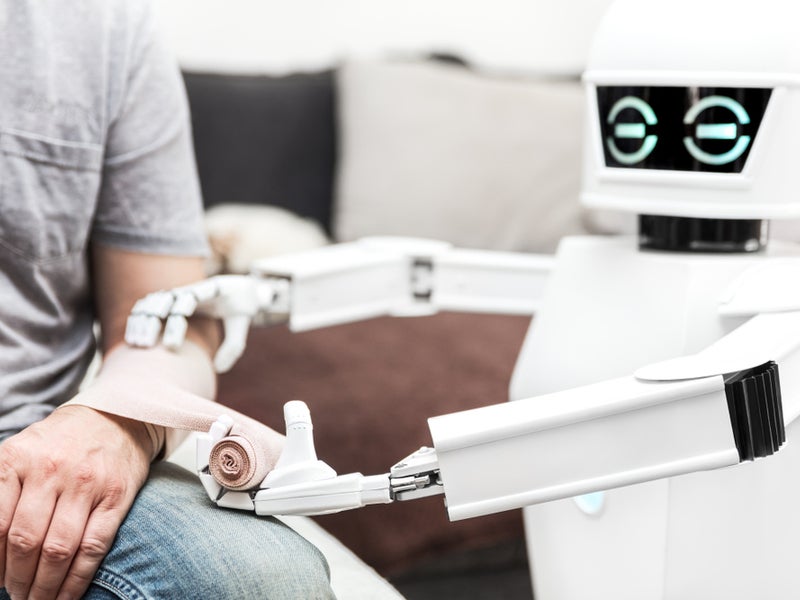Robotics is increasingly being considered synonymous with progress within multiple industries. Healthcare robotics has been specifically developed to improve patient outcomes. Healthcare robotics varies, as there are multiple ways they can be used in a healthcare setting. The industry is expanding with the adoption of automation across all areas. Surgical robotic systems are a paragon of robotics in the medtech industry. Over the next five years, there will be rapid growth in the robotics market within the healthcare sector.
Listed below are the key trends impacting the global robotics industry, as identified by GlobalData.
Medical robots
The use of robots to support the completion of medical procedures has been the subject of significant R&D over the past two decades. More recently, the da Vinci Surgical System (developed by Intuitive Surgical) was the first robotic surgical system approved by the FDA for general laparoscopic surgery. Leading players in medical robotics, such as Cyberdyne, Ekso Bionics, and ReWalk Robotics, have launched exoskeletons aimed at enabling patients with spinal cord injuries to walk.
The medical robotics segment holds enormous promise, particularly for surgical interventions that require high levels of precision. The evolution of technologies such as cloud computing and AI will drive innovation in this space, thus reducing, and sometimes even eliminating, the need for the surgeon to be physically present.
Future developments in this field will focus more on preventive care and improving the quality of life of elderly patients by making many procedures less invasive, with an attendant reduction in recovery time and associated cost. Another application of medical robotics is nanosurgery, in which micro-robots will operate on individual cells.
Care robots
Considering the fact that the global population is aging, extended families are dispersing, and social welfare budgets are under strain, care robots can dramatically cut the cost of nursing elderly patients. Toyota and Honda have been developing human support robots for many years. Belgian start-up company Zora Robotics is developing eldercare services via customised Alexa-enabled Echo devices. In Japan, Robear has been available on an experimental basis since 2015. A similar robot, named Stevie, was developed in 2017 by a team at Trinity College in Dublin, Ireland.
The number of robots being used to provide care and support to elderly and disabled patients is expected to increase significantly over the next decade, particularly in countries like Japan that are facing a predicted shortfall in the number of caregivers. Initially they will help people get into and out of bed, but will increasingly be called upon to perform more complex tasks, from reminding patients about medication to providing emotional support and human-like interaction.
How well do you really know your competitors?
Access the most comprehensive Company Profiles on the market, powered by GlobalData. Save hours of research. Gain competitive edge.

Thank you!
Your download email will arrive shortly
Not ready to buy yet? Download a free sample
We are confident about the unique quality of our Company Profiles. However, we want you to make the most beneficial decision for your business, so we offer a free sample that you can download by submitting the below form
By GlobalDataThis is an edited extract from the Robotics in Medical Devices – Thematic Research report produced by GlobalData Thematic Research.









Related Company Profiles
Intuitive Surgical Inc
Cyberdyne Inc
Toyota AG
Zora Robotics NV
Trinity College